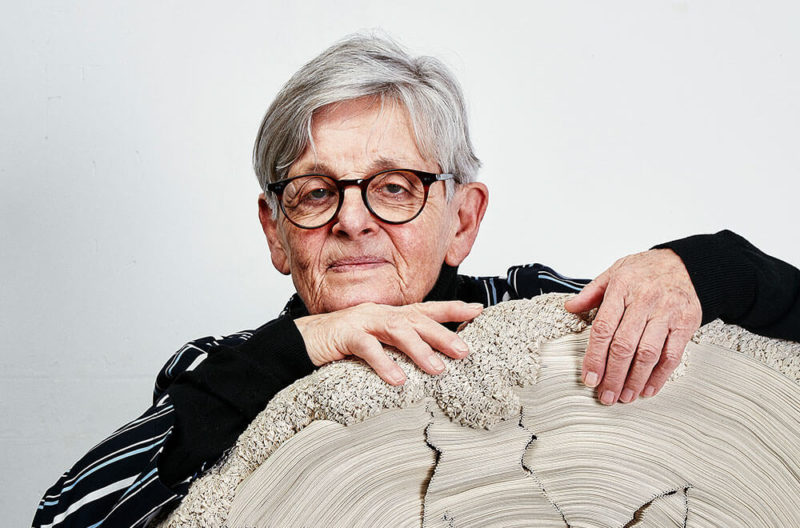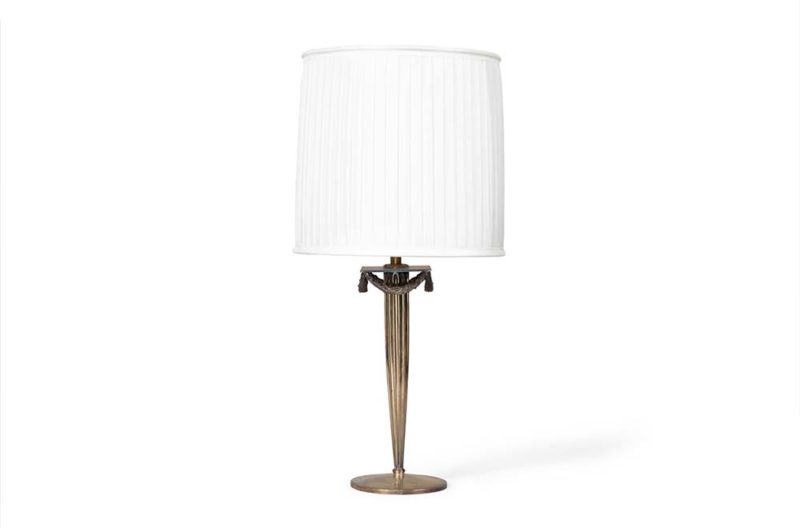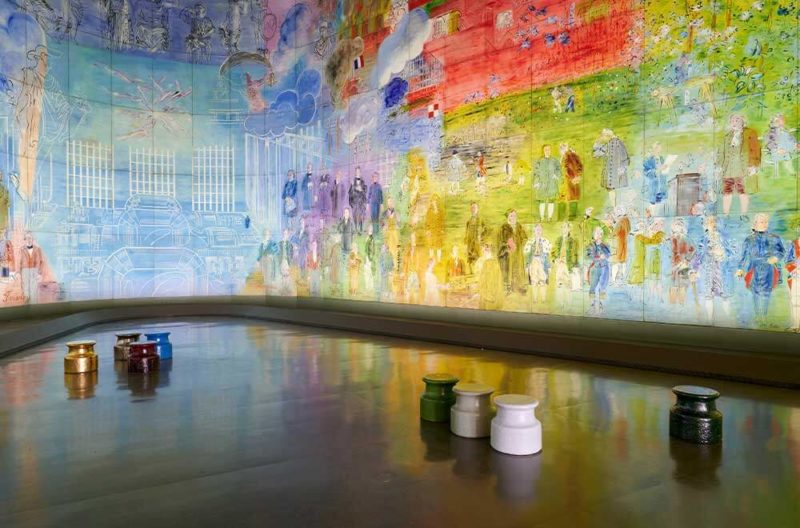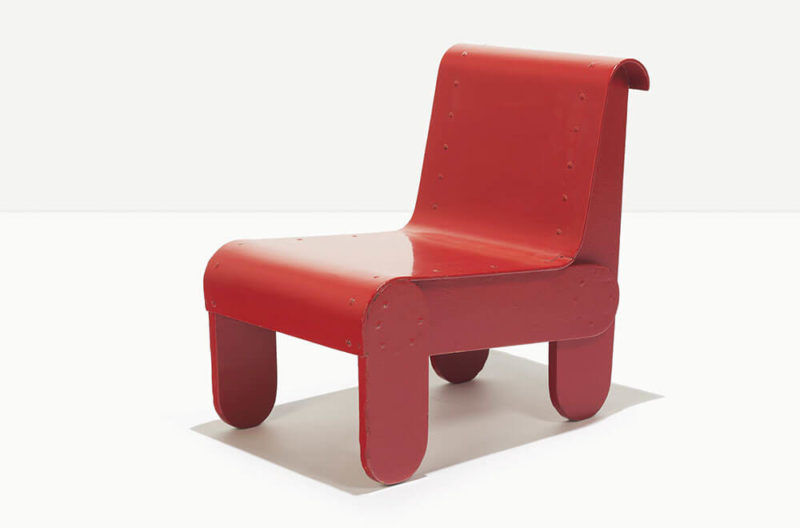Paris Dispatch / January 2022
The four shows to catch ...
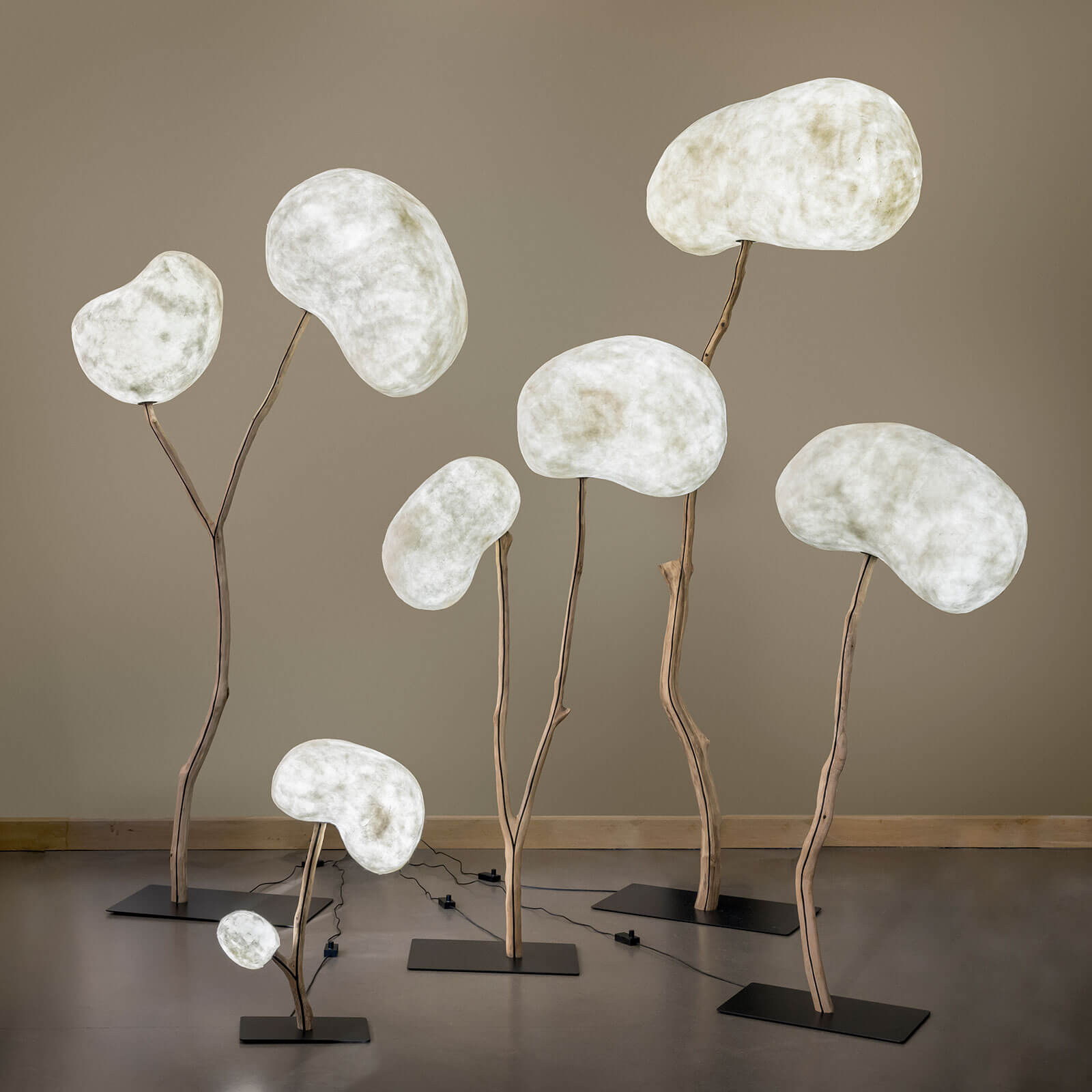
Diane de Kergal, ‘Emergence’ series, 2021
COURTESY: Galerie Gosserez & Diane de Kergal
WOMEN DESIGNERS FROM France and Denmark are particularly prominent in several exhibitions in Paris this January. Diane de Kergal’s luminous sculptures, their shapes spun by silkworms, represent an extraordinary collaboration with nature. The Danish trio of Lotte Westphael, Tora Urup and, the sole man, Carl Emil Jacobsen, play seriously with optical illusions. Meanwhile, Bente Skjøttgaard’s glazed ceramics evoke oceanic memories and Léa Mestre’s striped lamps in candy colours are a visual feast.
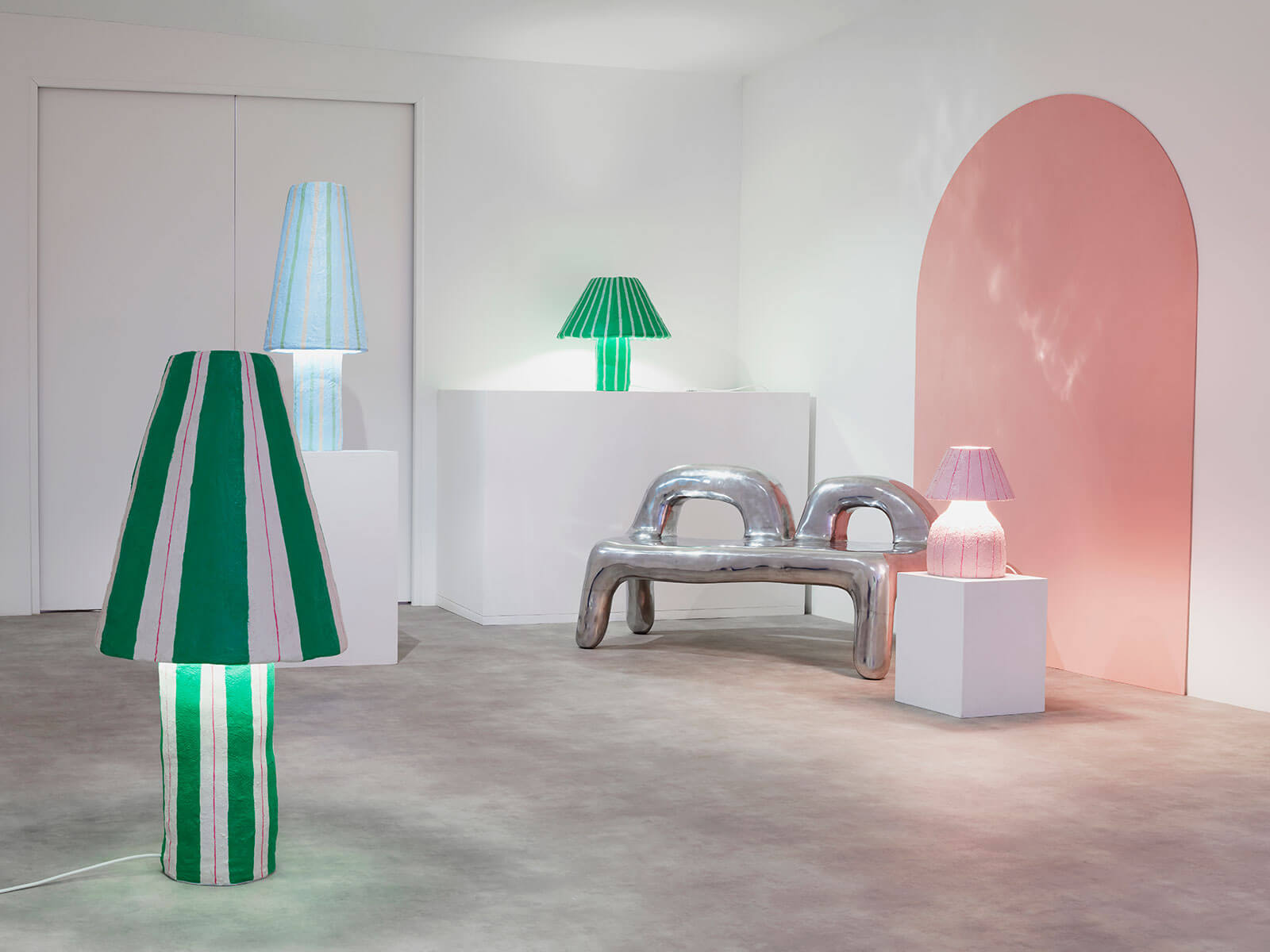
Exhibition view, ‘Léa Mestres: Sisters – Sisters’
COURTESY: Galerie Scène Ouverte & Léa Mestres
‘Diane de Kergal: Vers Soi’ at Galerie Gosserez (until 15th January 2021)
A forest of luminous sculptures, the shapes of which have been magically spun by silkworms, fills Diane de Kergal’s first exhibition at Galerie Gosserez.
The half dozen pieces on display evoke trees of differing heights, topped with white, silk cocoons. Kergal, also an interior designer, began making them two years ago after becoming interested in working with light. Having focused on pure, minimalist lines in her projects for clients, she wanted to develop soft, organic forms when she began creating her own work. The question that arose was what material she should choose.
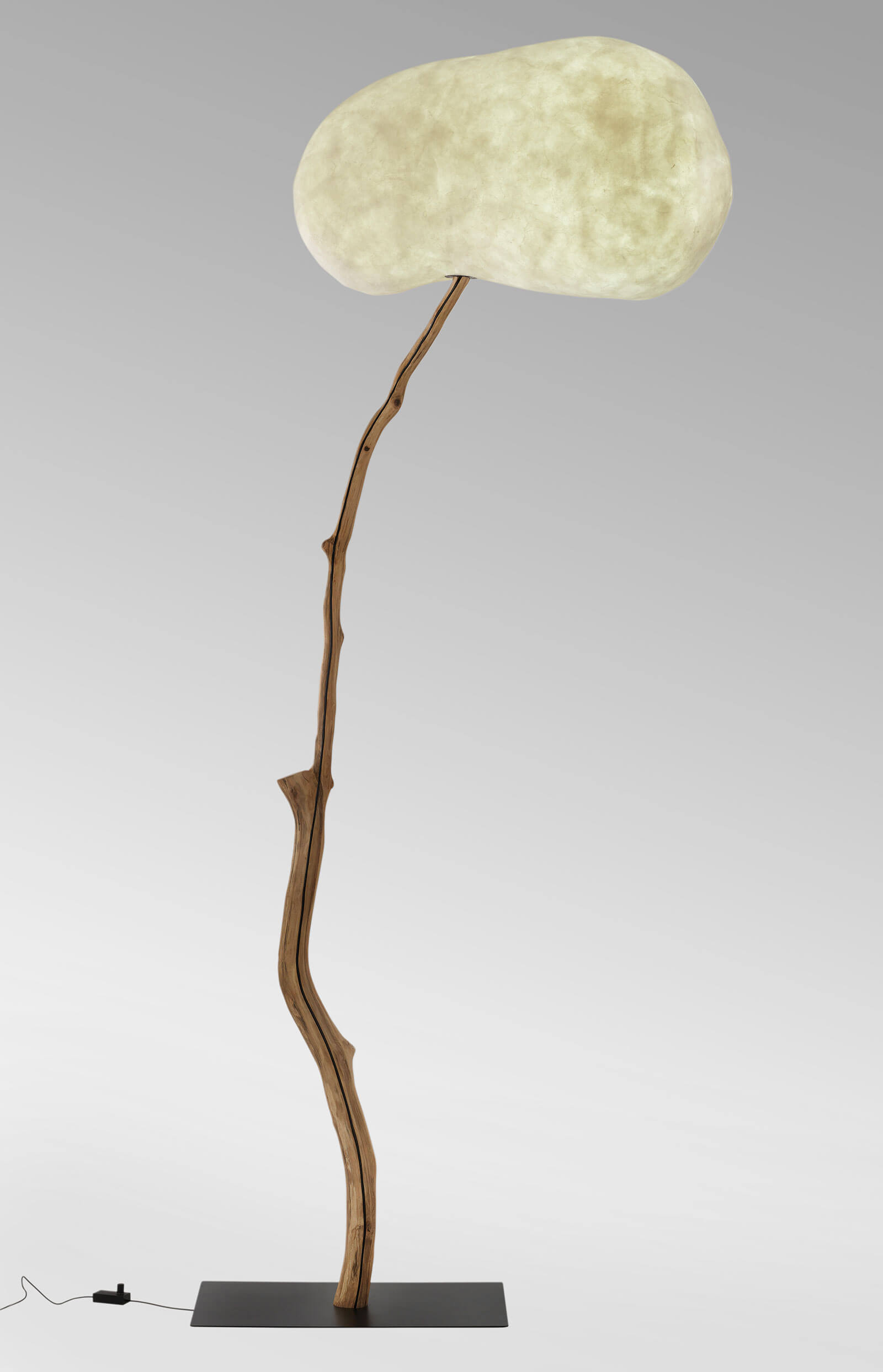
Diane de Kergal, ‘Emergence VIII’, 2021
COURTESY: Galerie Gosserez & Diane de Kergal
“I’ve always liked paper lamps, like [Isamu] Noguchi, so I looked for a natural material, similar to paper,” Paris-based Kergal says. One of her craftsmen recommended contacting the silk company Sericyne, which patented an innovative technique to create shaped silk in the mountainous Cévennes National Park – known for its silk-making heritage – in the south of France.
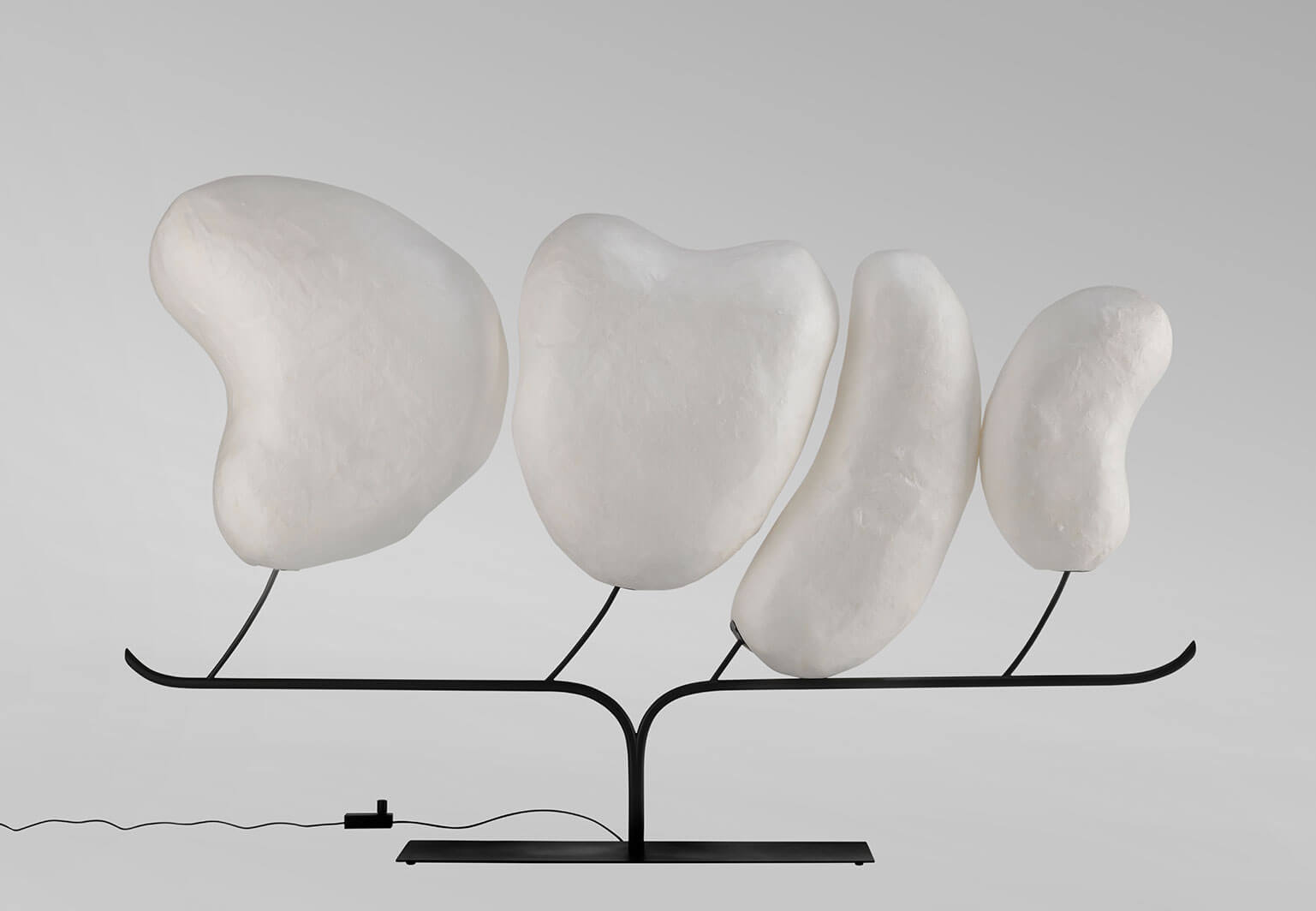
Diane de Kergal, ‘Emergence VII’, 2021
COURTESY: Galerie Gosserez & Diane de Kergal
The elaborate process involves Kergal making supple moulds, around which the silkworms spin silk in a controlled environment. Once the sheath-like work of the silkworms is completed, Kergal’s moulds are taken out and LEDs are inserted. “What’s interesting about working with silk is that there’s a metamorphosis,” Kergal explains. Indeed, the title of the exhibition alludes to transformation, translating as “towards oneself” whilst being a pun on “ver à soie”, meaning silkworm.
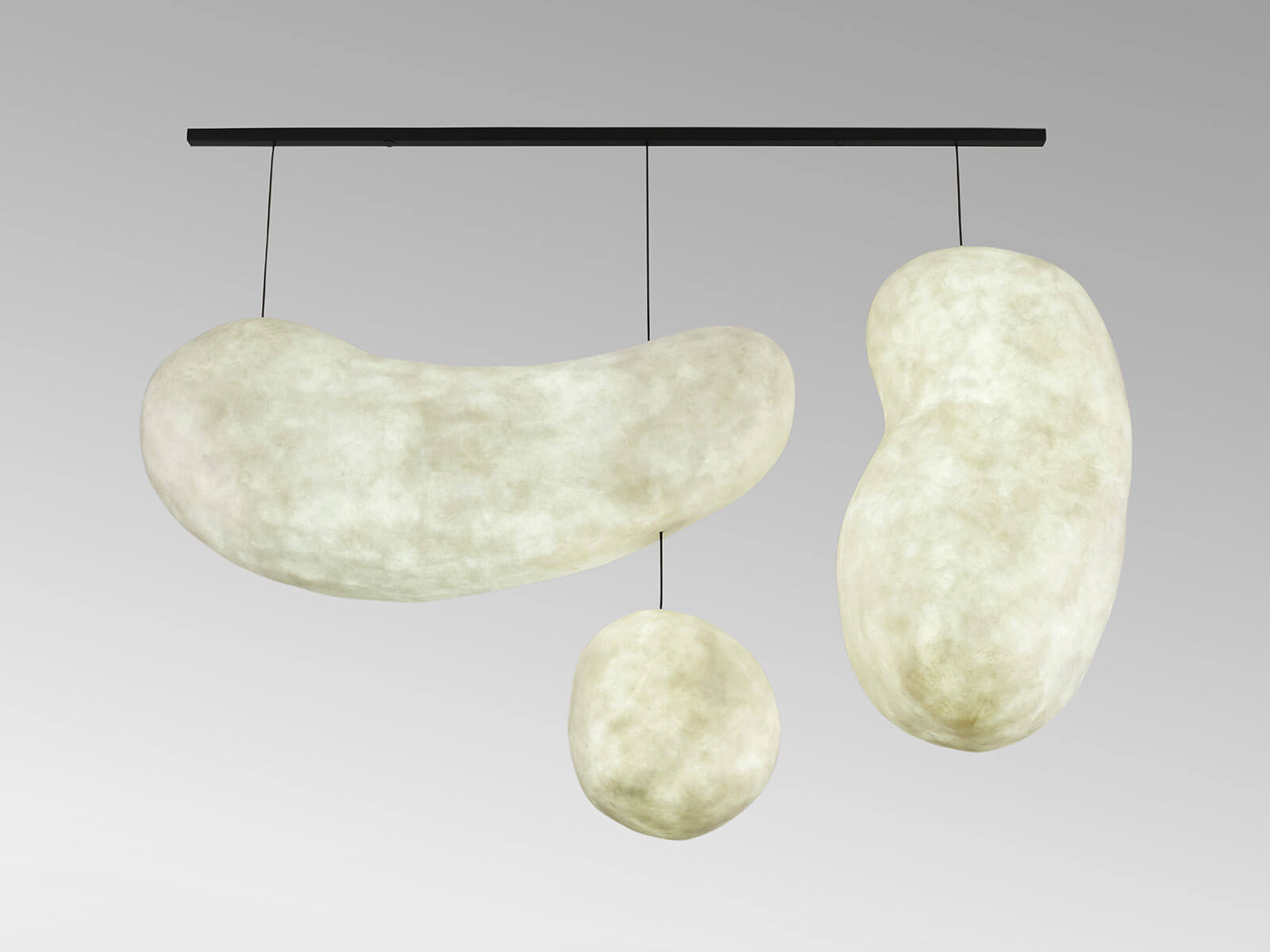
Diane de Kergal, ‘Emergence VI’, 2021
COURTESY: Galerie Gosserez & Diane de Kergal
Kergal’s captivating works, which are surprisingly sturdy, have already proven a hit: one of them has been acquired by the Mobilier National, which manages France’s national furniture collection. “One doesn’t normally associate the Mobilier National with silk and craftsmanship, so I’m very moved,” Kergal says excitedly.
‘Bente Skjøttgaard: Tableaux’ at Galerie Maria Lund (until 8th January 2022)
Underwater creatures and corals are the inspiration behind Bente Skjøttgaard’s sixth exhibition of glazed ceramics at Galerie Maria Lund. The carefully arranged groups of vases and non-utilitarian objects form a tableau of the submarine world, evoking the movement, light and colour of swaying coral, anemones and rocks peeking through seaweed, .
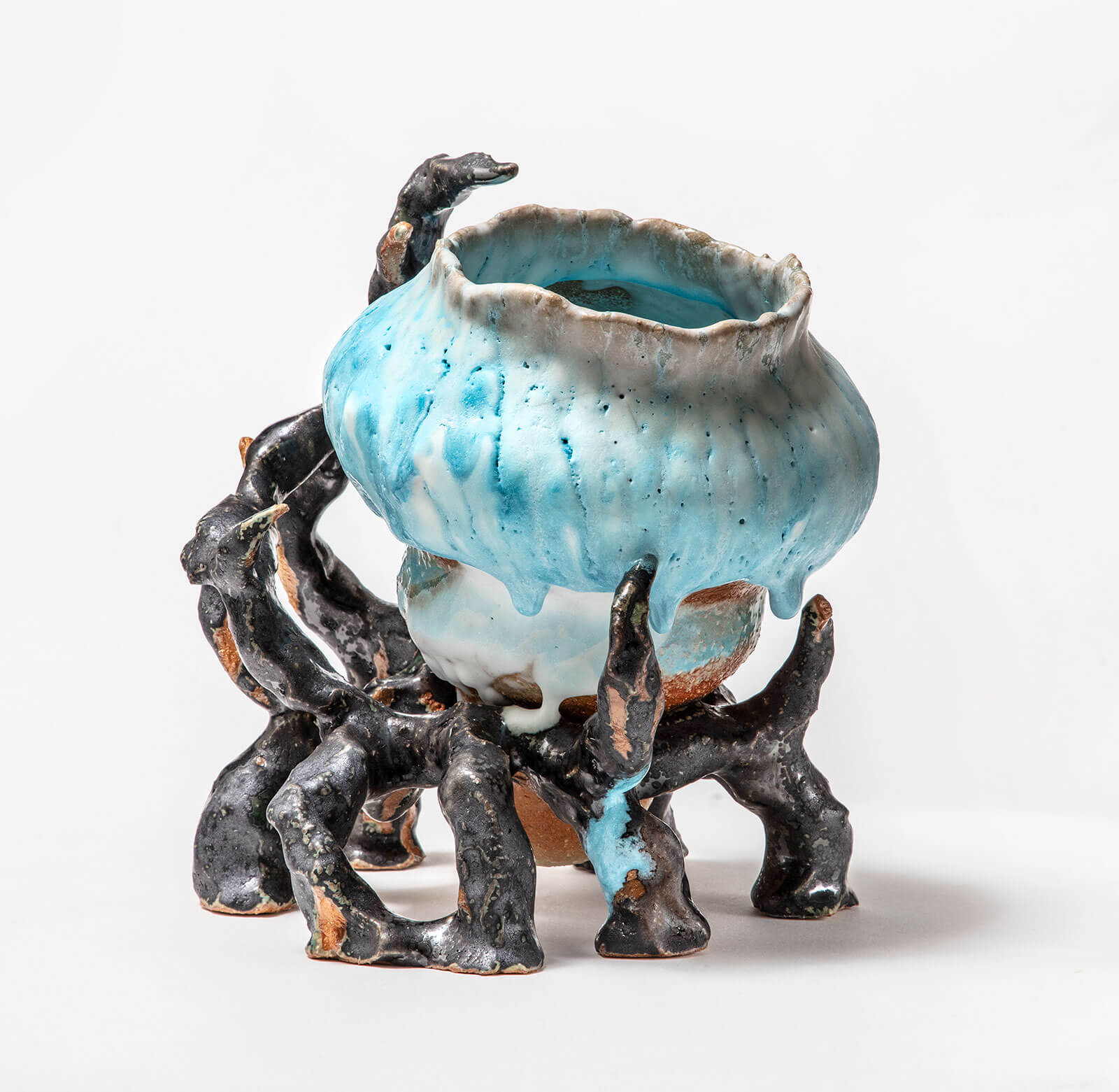
Bente Skjøttgaard, ‘Phylum Cnidaria #2137’, 2021
COURTESY: Galerie Maria Lund & Bente Skjøttgaard
It was perusing German biologist Ernst Haeckel’s book Art Forms in Nature (1904) that gave Skjøttgaard the idea to make ceramics based on six different oceanic species that loosely reference the exhibits found in natural history museums. The Danish artist, whose work is in the collections of the Victoria and Albert Museum, the Musée National de Céramique de Sèvres and the Danish Art Foundation, also observed the nature around her.
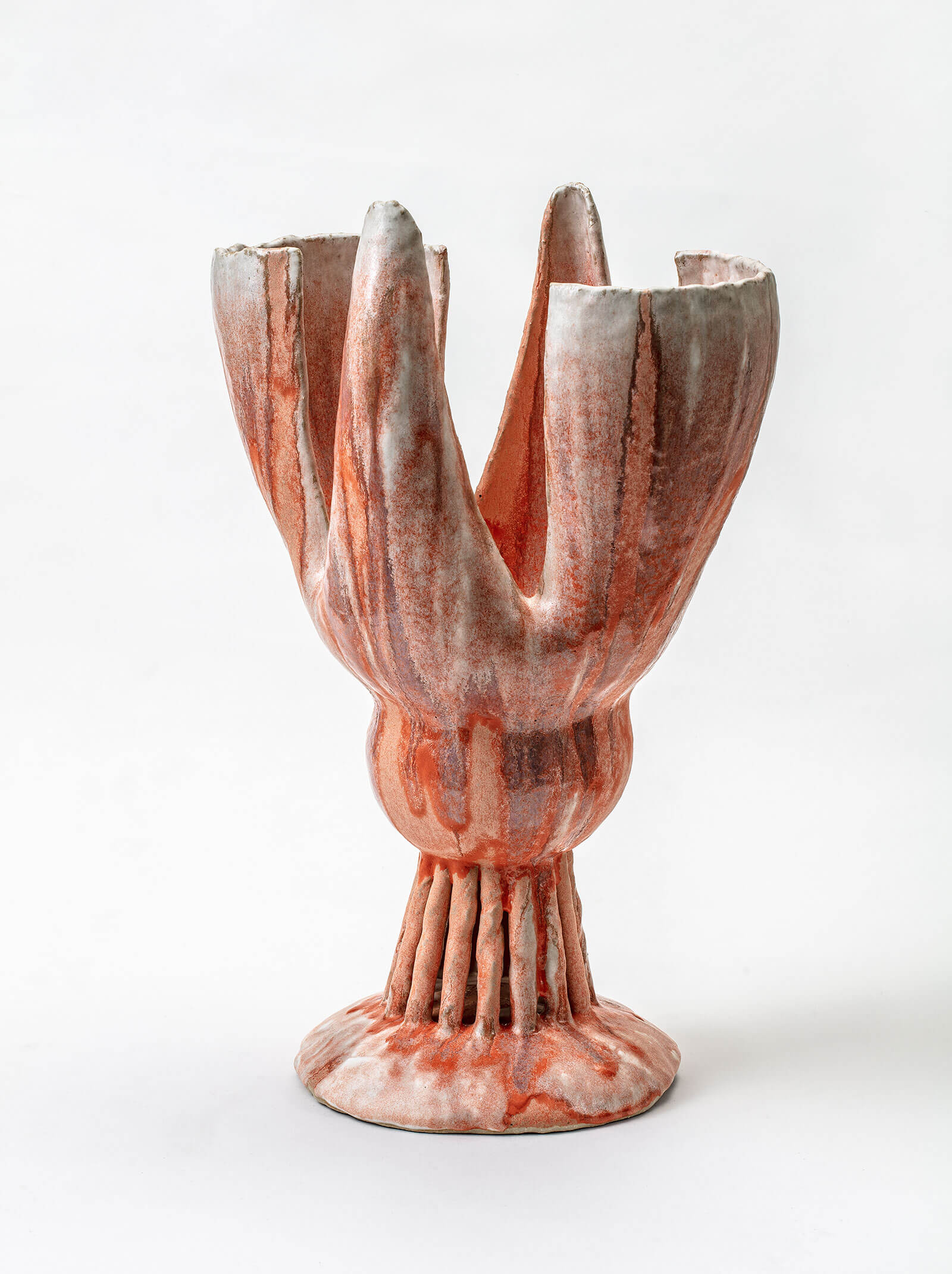
Bente Skjøttgaard, ‘Orange Blossom #2040’, 2020
COURTESY: Galerie Maria Lund & Bente Skjøttgaard
Completed by several layers of differently coloured glazes, the painterly pieces appear meticulously made. But Skjøttgaard admits that an element of the unexpected is intrinsic to the firing process in the kiln. “I have to imagine what the piece will be like after the firing because it’ll change in the kiln and maybe something unforeseen will occur,” she says. “I need to ensure that it doesn’t move in undesirable ways, but has its own life.”
Léa Mestres: Sisters – Sisters at Galerie Scène Ouverte (until 22nd January 2022)
Looking for an antidote to the rising rates of the Omicron variant? Step into Léa Mestres’s uplifting exhibition at Galerie Scène Ouverte. The space is populated by tall, brightly striped, hand-varnished lamps that would not look amiss in a Christmas Disney movie.
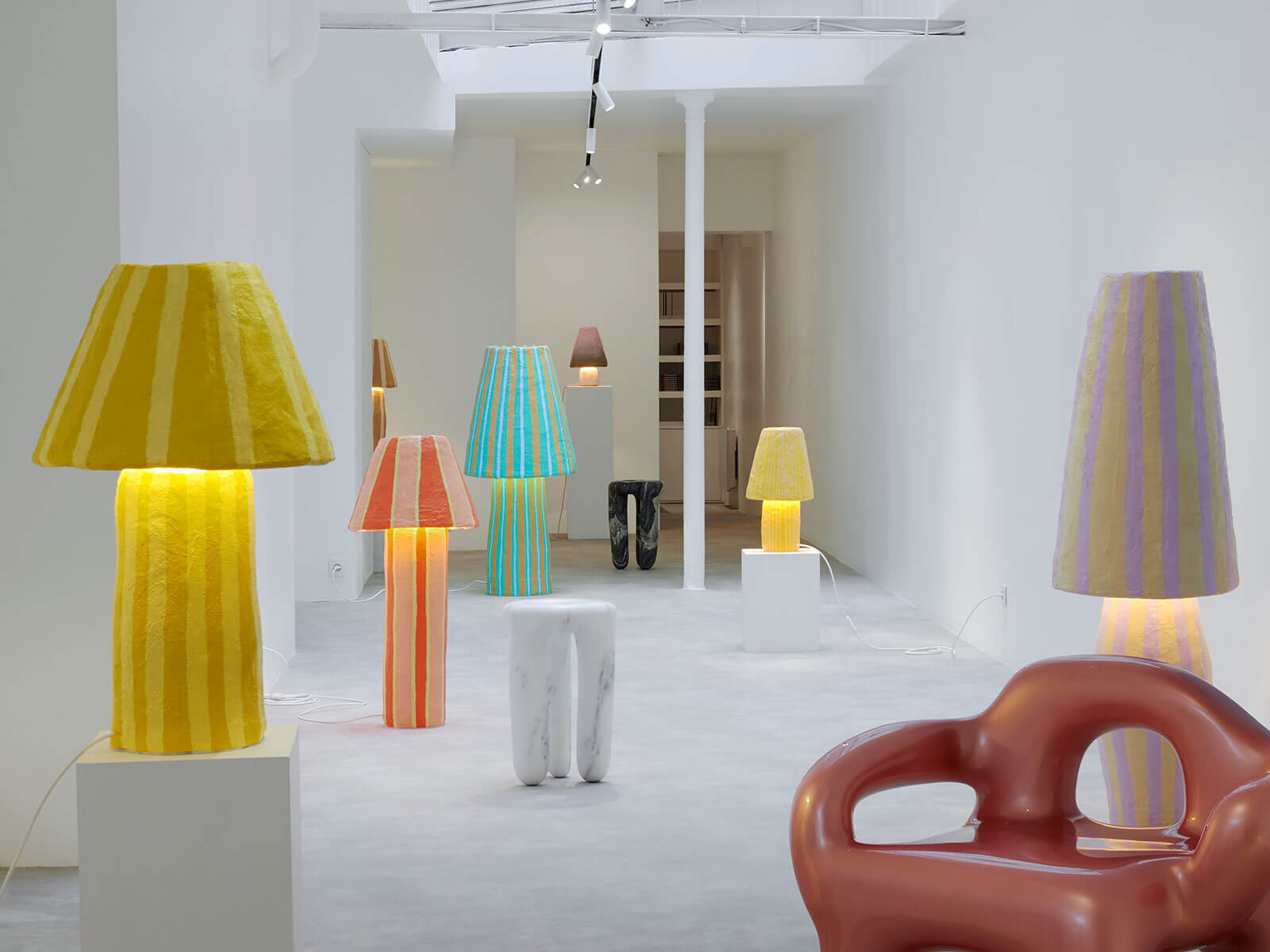
Exhibition view, ‘Léa Mestres: Sisters – Sisters’
COURTESY: Galerie Scène Ouverte & Léa Mestres
“A lot of people see a forest of lamps but for me it’s like a dinner party of old ladies,” the young French designer says, laughing. “They all have strong personalities and are like my friends’ grandmothers, or characters in films.”
The lamps come in all shapes and sizes, each personifying a different woman. ‘Michelle’, Mestre’s favourite, has thick yellow and pink stripes and narrow blue lines, the form bulging out a bit towards the bottom. ‘Perrine’, shorter in stature, has wide green and white stripes and uneven red lines running through the white. The stripes aren’t straight just as the surfaces aren’t smooth – an analogy to the imperfection of human beings.
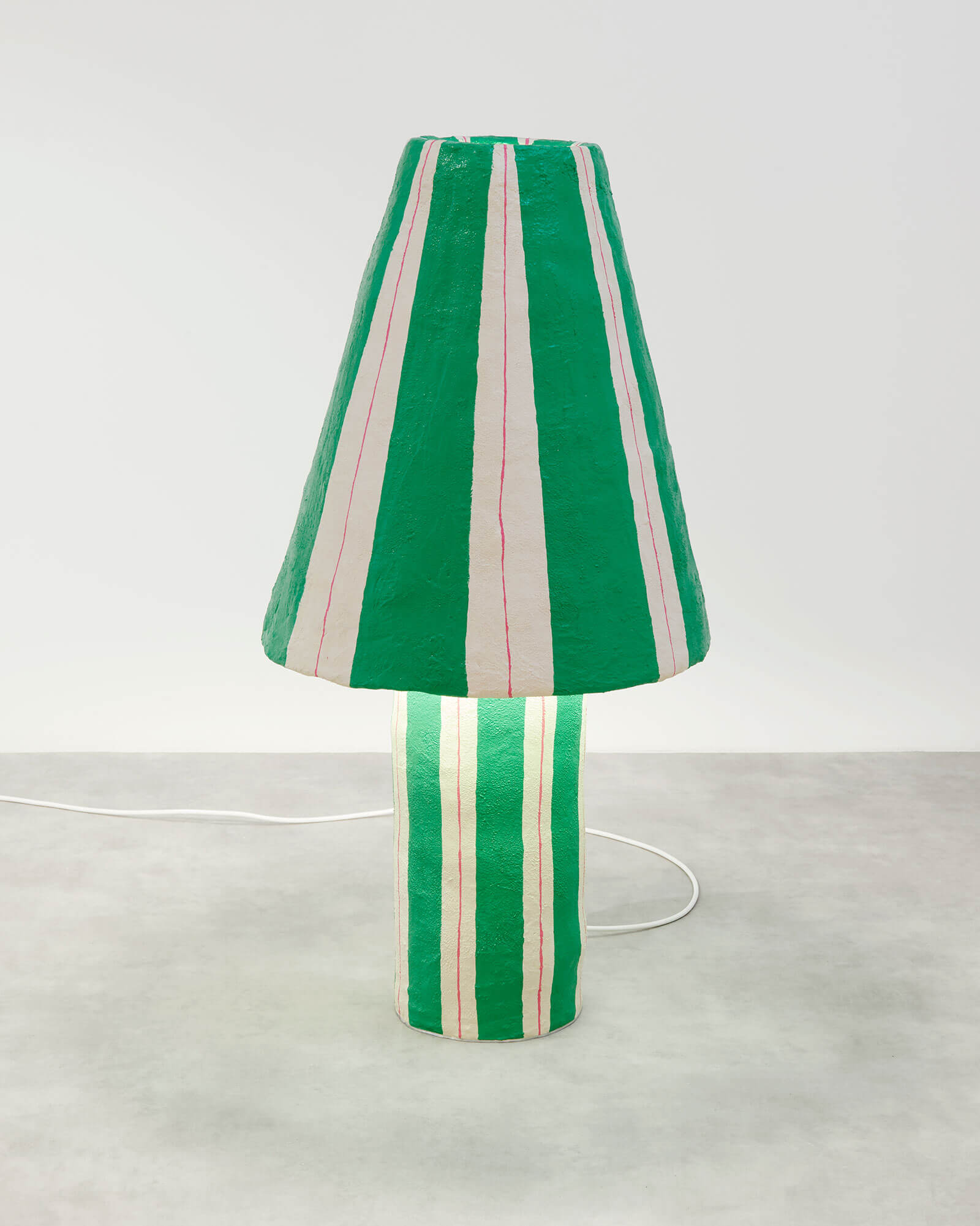
Léa Mestres, ‘Perrine’, 2021
COURTESY: Galerie Scène Ouverte & Léa Mestres
Attributing exaggerated personalities to her lamps happens in the latter part of her creative process. “They all start off white and then I spend weeks putting on colours, which is when they come alive,” says Mestre, who makes them by hand.
This is Mestre’s second exhibition at Galerie Scène Ouverte, following her debut last year that featured pieces made during the first lockdown. “This time I’ve let people enter my vision,” Mestre, 29, says.
‘Line, Space, Texture. The Poetics of Form in the Works of Lotte Westphael, Tora Urup and Carl Emil Jacobsen’ at Galerie Maria Wettergren (until 8th January 2022)
Galerie Maria Wettergren is renowned for interdisciplinary exhibitions and this one, characterised by optical illusions, continues in this vein. It brings together works by three Danish artists – Lotte Westphael, Tora Urup and Carl Emil Jacobsen – that vary in scale and scope in complementary ways.
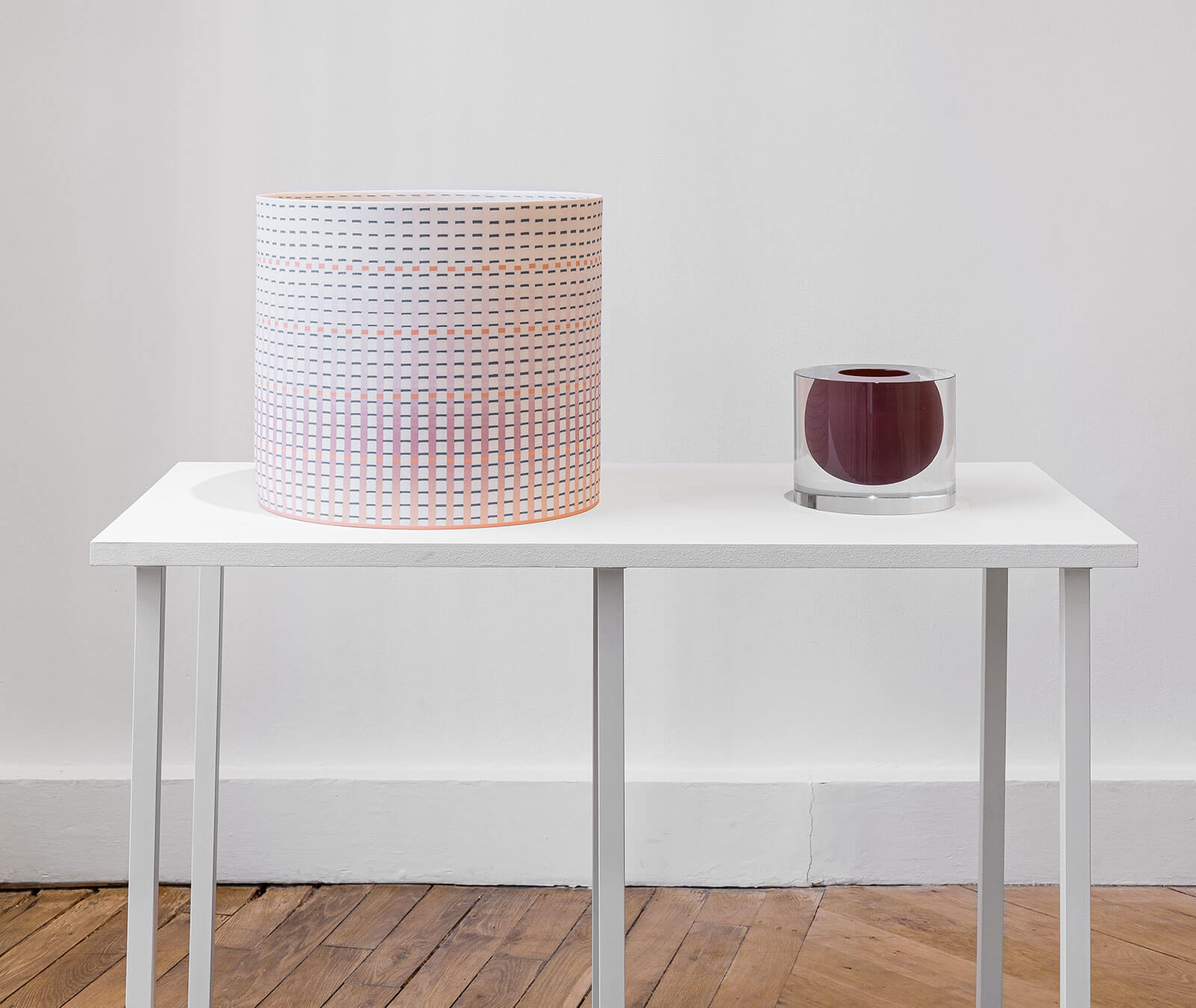
Exhibition view, ‘Line, Space, Texture’ with (left) Lotte Westphael, ‘Golden Polyrhythm Gradient, 2021; (right) Tora Urup, ‘Cyclinder with Floating Bowl, Plum’, 2015
COURTESY: Galerie Maria Wettergren
Westphael creates highly intricate ceramics that convey her interest in architecture. The delicate, rhythmic stripes in her vessels are reminiscent of columns, the shifting tonal gradations encapsulating a painstaking attention to detail.
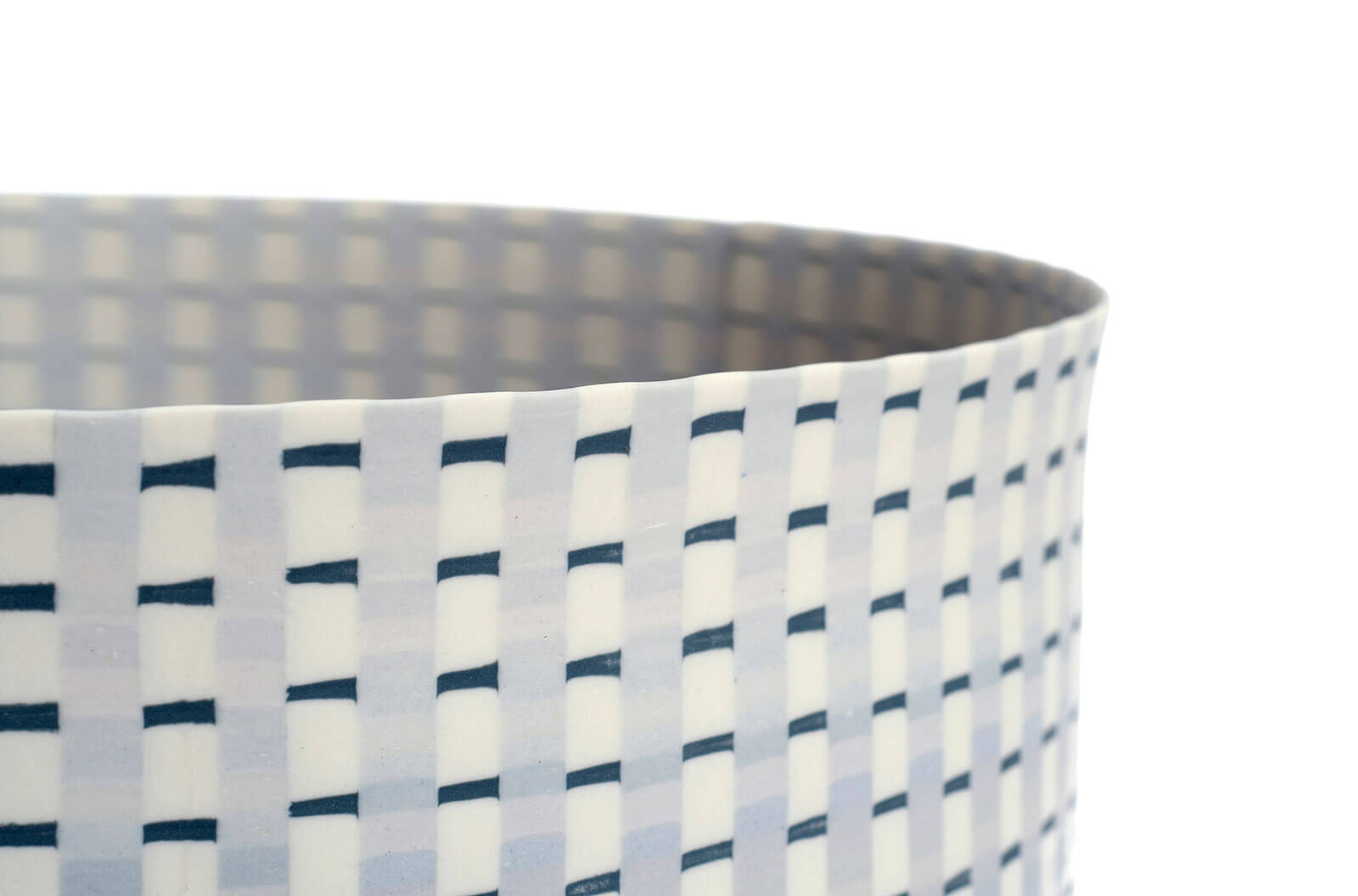
Lotte Westphael, ‘Multilayer Polyrhythm’, 2021 (detail)
COURTESY: Galerie Maria Wettergren & Lotte Westphael
Urup’s smooth, hand-blown glass bowls are also eye-catching. The duo-chromatic, precisely-cut circular sculptures are made from several layers of opaque and transparent glass of varying thicknesses. Playing with volumes and visual effects, one is unsure whether one is beholding a shiny surface, or gazing into a hollow depth.
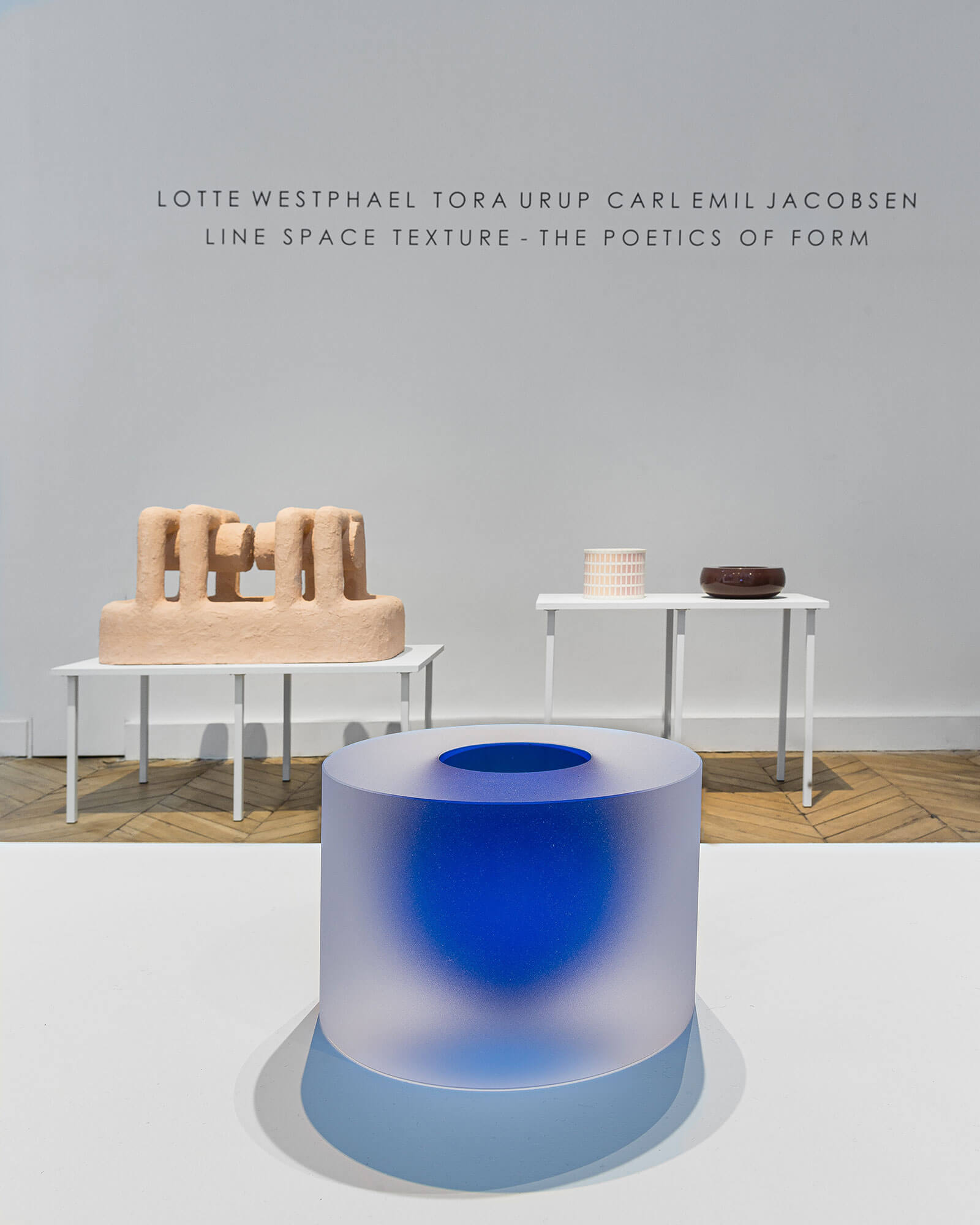
Exhibition view, ‘Line, Space, Texture’
COURTESY: Galerie Maria Wettergren
The link between Westphael and Urup’s work and that of Jacobsen is not immediately apparent. Made from fibre-reinforced concrete, polystyrene and pigments from crushed stones, his more imposing sculptures in rich, earthy tones are evocative of traditional dwellings, relics and water systems. Upon closer inspection, the resonance reveals itself through the relationship to lines and symmetry.
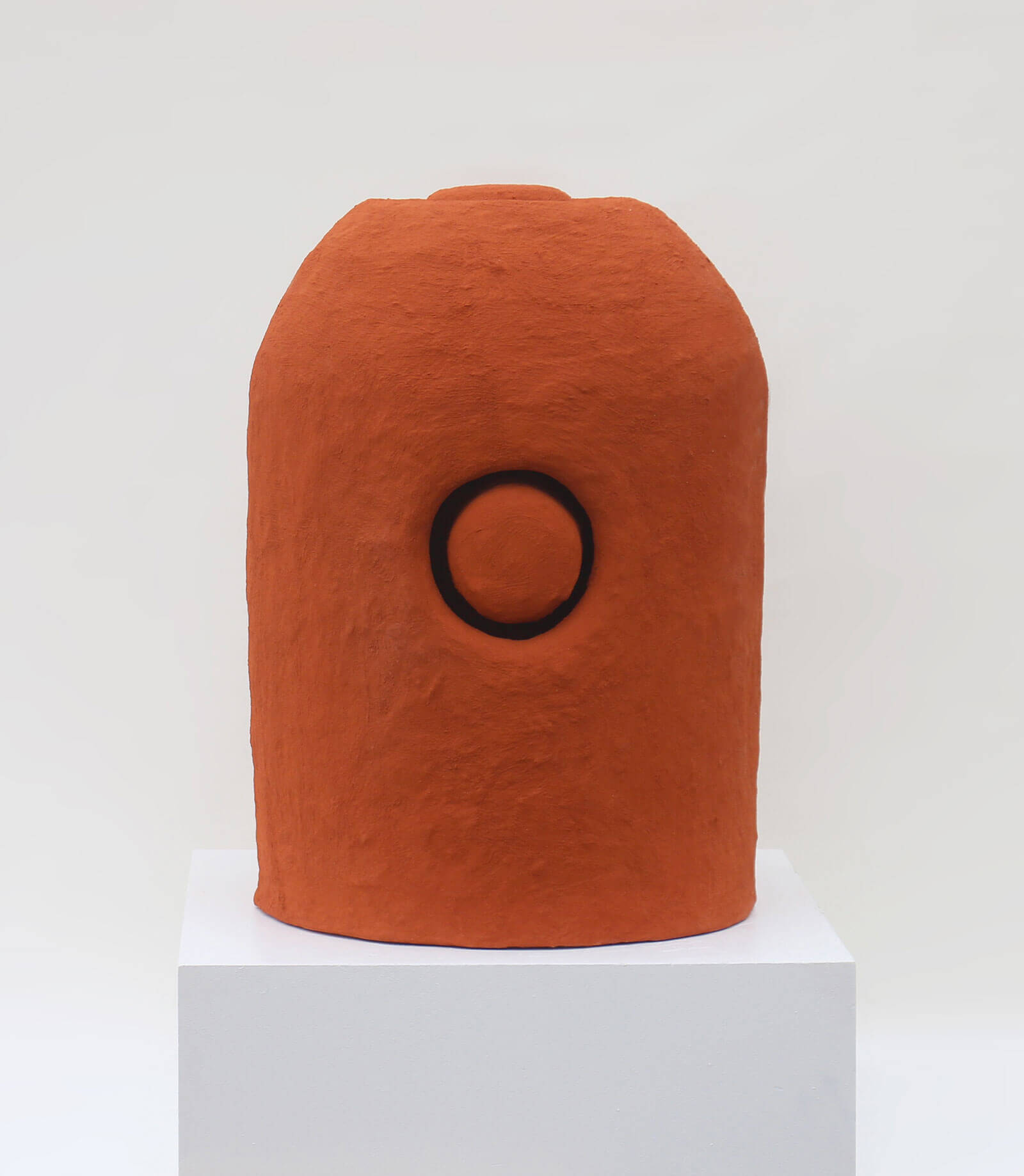
Carl Emil Jacobsen, ‘Red Powder Variation #6’, 2017
COURTESY: Galerie Maria Wettergren & Carl Emil Jacobsen
Diane de Kergal: Vers Soi is at Galerie Gosserez, 3 Rue Debelleyme, 75003 Paris, until 15th January 2022. POA.
Bente Skjøttgaard: Tableaux is at Galerie Maria Lund, 48 Rue de Turenne, 75003 Paris, until 8th January 2022. Works range from €1,000-€17,000.
Léa Mestres: Sisters – Sisters is at Galerie Scène Ouverte, 72 rue Mazarine, 75006 Paris, until 22nd January 2022. Works range from €2,500-€28,000.
Line, Space, Texture. The Poetics of Form in the Works of Lotte Westphael, Tora Urup and Carl Emil Jacobsen is at Galerie Maria Wettergren, 121 Rue Vieille du Temple, 75003 Paris, until 8th January 2022. POA.




